- It’s what we do – adventure motorbike riding tours magazine news events
- Dakar 2019: The Wish
- Yamaha Ténéré 700: First Aussie Ride!
- Under African Skies – australian adventure motorbike magazine
- Ducati Multistrada Enduro 1260
- Congregations (NSW and WA)
- Royal Enfield Himalayan – adventure motorbike magazine – australia
- Kimberley Dreaming
- Ural Adventure Ride = australian adventure motorbike magazine
- Bali Tour 2019 – Perth Adventure Riders
- Scott Britnell
- Window Shopping
- Fathers Day = australian adventure motorbike magazine
- Blue Banger Run = adventure motorbike riding
- KLRRR
- Best Job In The World
- Tubeless Bliss with Miles Davis
- Retyrement with Andy Strapz
- Food For Thought with Karen Ramsay
- Checkout
- Fit Out
Adventure Rider Magazine first spoke to Scott Britnell waaaaay back in issue #06. Since then he’s kicked a goal or two, including entering and finishing his first Dakar in 2018.
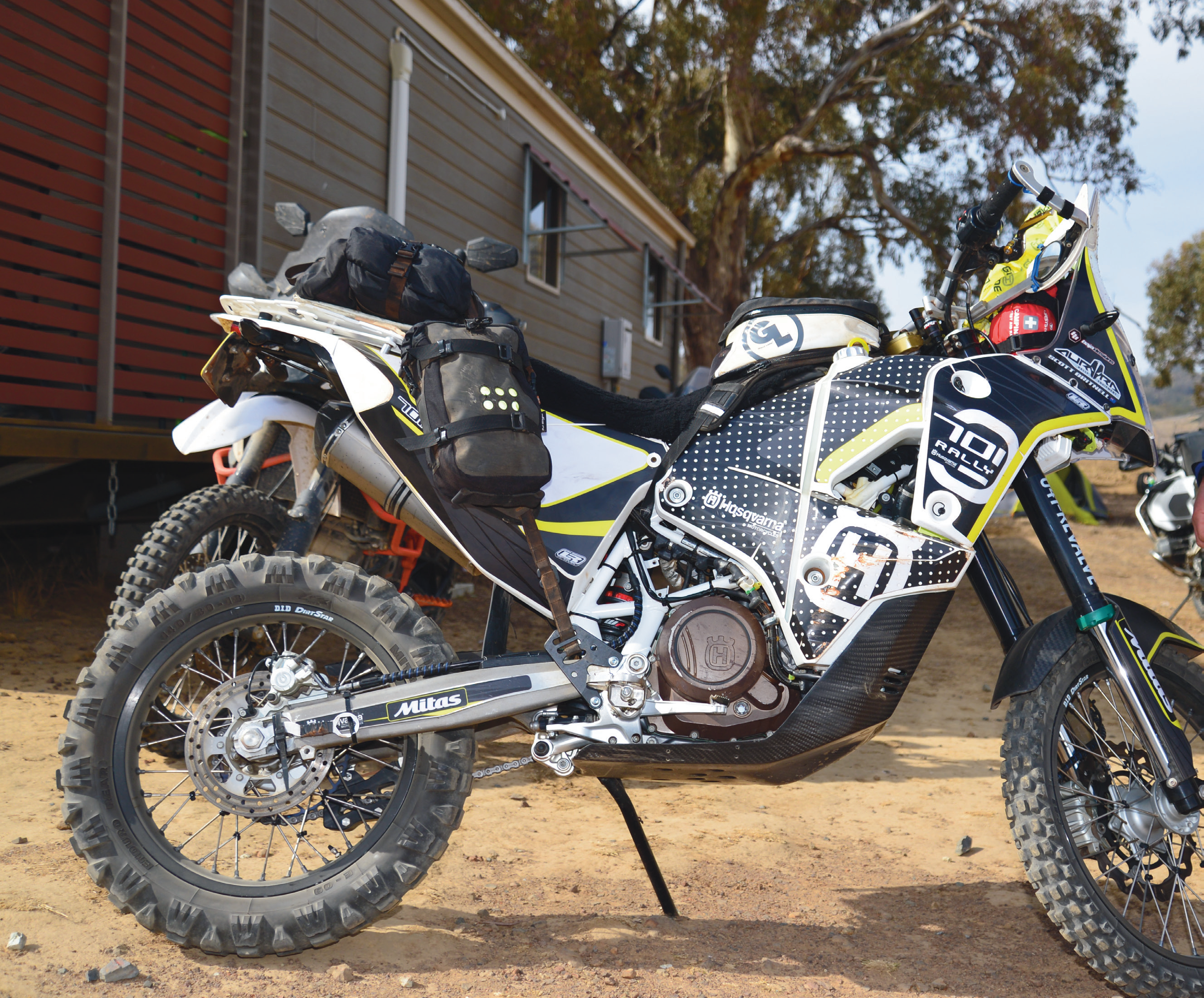

First contact with Scott, 45, from the Southern Highlands of NSW, was a phone call out of the blue when he introduced himself, said he was planning to set a record for a double-crossing of Australia – Byron Bay/Steep Point/Byron Bay – and asking whether we might be interested in a story on the attempt.
Of course we were.
We kicked off in issue #06 with a look at the KTM 690RFR he’d put together for the record-setting ride, a masterpiece of preparation.
For issue #08 we waited at the Byron Bay lighthouse as he rode in after doing the overland return crossing in just 173 hours and 50 minutes. He looked a lot fresher and less tired than we did on that occasion.
Scott then thought he’d lead a tour or two overseas,set a record for a solo ride the length of the Canning Stock Route, then saw the CSR record beaten so went back and did it again. You can read that story in issue #37.
He also entered and completed Dakar in the brutal Malle Moto class in January 2018.
When we found Scott floating around the NSW Congregation we leapt at the chance to find out more.
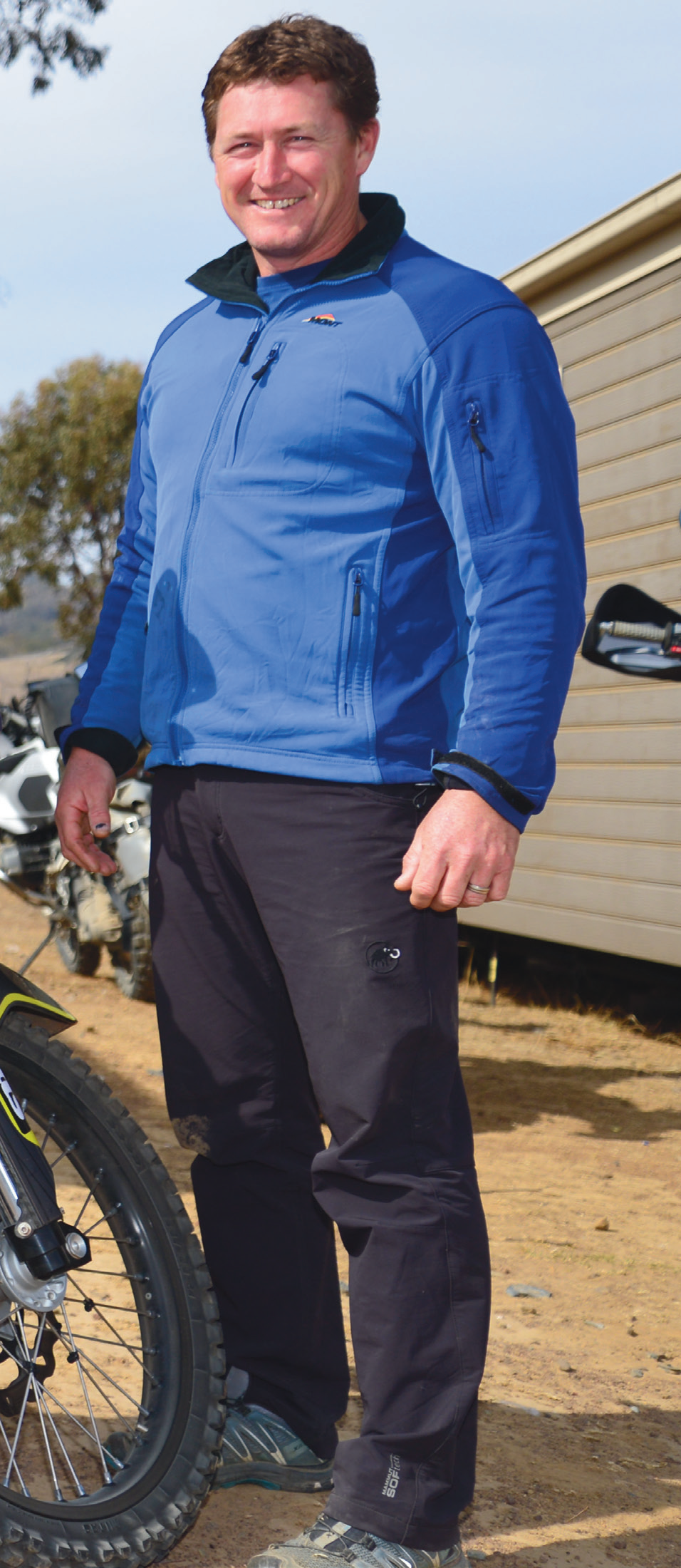

AdvR: One of the most daunting things for any privateer tackling Dakar is finance. How did you do it?
SB: For an average bloke, trying to put the money together for something like Dakar is hard work.First, you can’t just get your hands on one of those bikes any day of the week. And once you find one, the cost of getting somewhere, to a minor rally in Europe or somewhere to actually get some experience on it, is expensive.
I sucked up the cost and bought a bike in Australia, prepared it myself, and then went through the logistics of sending it back to Europe through a race team there. The team received it, got it through scrutineering and got it on the boat for Dakar, and then I met it in South America.
I think my budget ended up being about $140,000 to get a bike, get it over there and complete the race. My wife and I probably put in more than half of that ourselves, and for the rest we did some fund-raising initiatives.
AdvR: How did the fund raising go?
SB: The biggest challenge with anything like that is it just consumes so much time.
All my efforts at fundraising would’ve been better spent knuckling down and doing extra hours of work, and just taking home a wage for extra time. The reward for effort on trying to run rides and that sort of thing as a novice is just too hard.
AdvR: You’re very strong on planning. How did you prepare for a Malle Moto run at Dakar?
SB: For starters, what was important to me was to have my hands on the bike and build it from scratch myself.
The KTM motto of being ‘ready to race’ is great, but you need to know about that bike for when it all goes to custard.
So I absorbed the extra cost of buying the bike in Australia, having it for six or eight months, and just did the little preventative-maintenance things…
lock- wiring and so forth. I wanted the comfort of knowing bolts couldn’t come undone or components work loose.
If I knew it couldn’t let me down during Dakar, I didn’t need to worry about carrying a spare.
So the preparation was important to me.
For somebody outside of the professionalrace industry, without a team behind you, it’s a minefield. Navigating through what you have to do to get a bike onto an aeroplane, with a carnet (a customs permit – ed), and going through logistics and freight and all that sort of stuff, was new territory for me. Fortunately, some of it I’d picked up because I had to go to the Middle East and do a couple of rallys to qualify for Dakar entry.
It’s a big learning curve, and rallys are a funny thing. There are a few people in Australia who’ve done rallys, Dakar included, but not many who are prepared to offer essential advice. I found it quite hard, and I was quite open about trying to get people on board. I’m happy to take advice from wherever, but it just wasn’t forthcoming.
It just made it that bit harder and a bit more of a challenge.


AdvR: How tough was scrutineering?
SB: It’s not too bad.
There’s like a pre-scrutineering they do to simplify things in France before the bike goes on the boat, but most things with Dakar are set up for people who speak European languages, so the research can be testing. Most have someone in their country who runs a rally team to help them out. I countered that by sending the bike to a race team to give them an opportunity to fix what I hadn’t quite got right.
Fortunately, when you start with a piece of hardware that’s designed and built specifically for a race, it’s almost there.
The tricky part was the wiring for all of the emergency and navigation equipment up front. That has to be spot on.
AdvR: Was there any crazy stuff forced on you to meet Dakar regulations?
SB: No. Everything made sense.
The organisers know how challenging things are. There’s a redundancy system for the emergency communications, and that’s built in for safety.
When you analyse what they’re expecting you can see the relevance.
The three litres of water are there for those guys I rode past sitting under their emergency space blanket trying to stay out of the sun. They needed the water on that day, or to get them through the night, before they could be picked up.
Your water, your emergency beacons…
all that stuff is built in for a reason and you can tell.
AdvR: We know you to be mentally and physically tough. How hard is it in the Malle Moto class?
SB: There were a couple of days where it almost beat me.
It’s the combination of everything: the fatigue; the lack of sleep; having to do all the work yourself; missing out on food and showers just because your priority is your bike and having it ready; and your navigation gear. It just compounds day after day.
There were times where I sat down with my bike stuck in the dunes and it took me 20 minutes to get my composure.
I needed some recovery time before I could actually look at the ground and see how I was going to get my bike out of that shitty spot. There were bikes and cars ripping past, and you’ve kind of got that look of desperation on your face like, ‘Hey.
How about you stop and give me hand?’ but it just doesn’t happen. You sit there, and you know that if they’re behind you they’re having just as much trouble as you, if not more.
Another thing is the terrain. Toby and the riders at the front are riding virgin terrain. There’s no tracks on it. They get to pick the line and ride at incredible speeds, and they’re amazing. But when you’re 50 to 100 riders back, the track is just pure carnage. If you crossed the Simpson Desert with a group of 20 and you were number 19, you’d already be riding as the 19th-fastest or slowest rider, and you’d have chopped-up terrain in front of you all day, every day. In Dakar you have 100 riders in front of you destroying the track, and you know the fast cars are going to get to you, so you’ve also got the worry of what’s coming from behind. The cars do all kinds of funky stuff to the track as well, once they’ve gone past.
So it just gets worse.
It’s not really something you can train for. All my training was done on my own, on tracks that weren’t being chopped up by 100 other riders, and that made it more challenging.
And you can’t ride the same lines as the frontrunners because you’re not carrying the same speed. You have to pick your own lines, and it’s basically a whole different track.
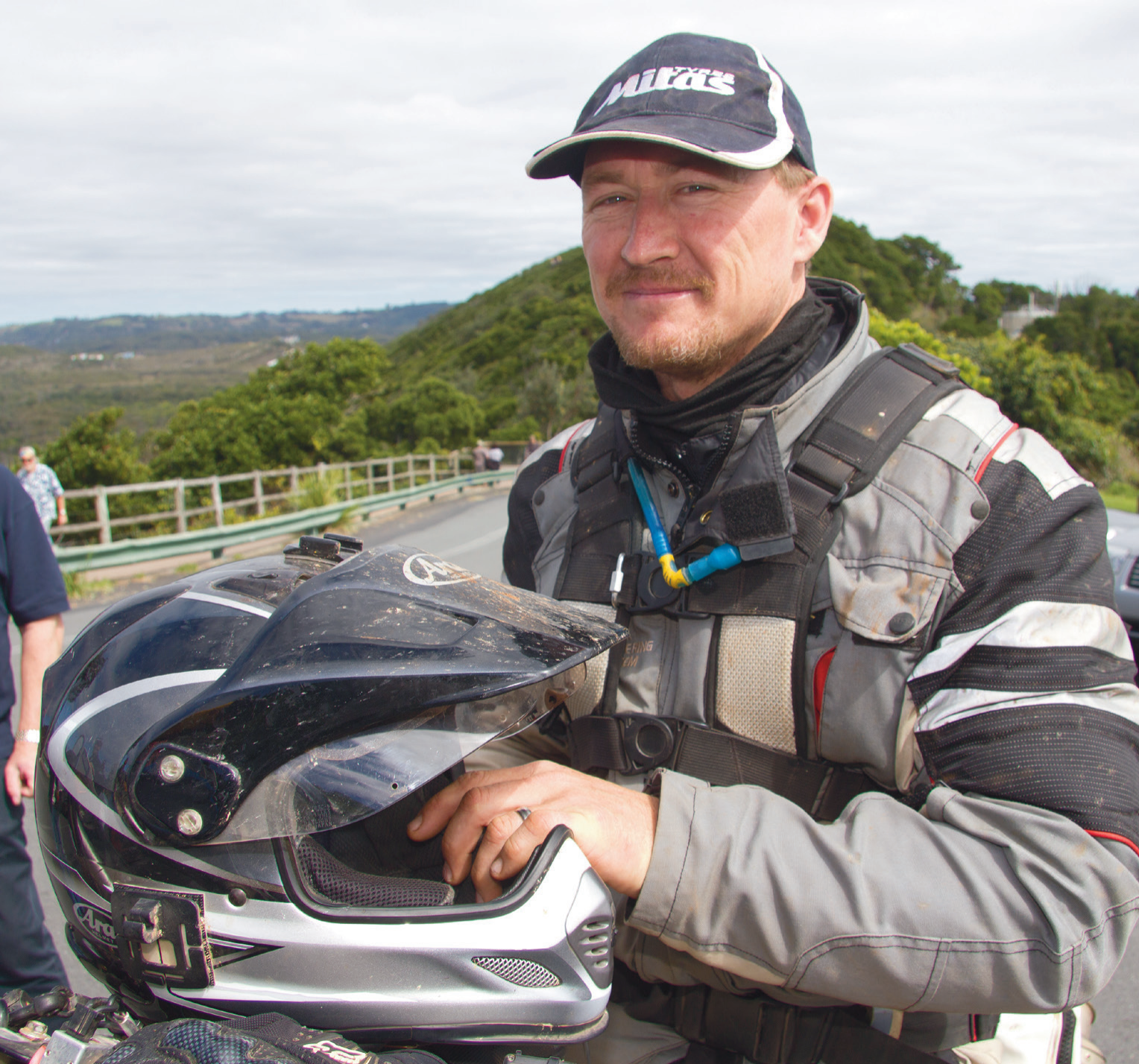

AdvR: It must’ve felt good when you finished.
SB: To be honest there was more disappointment from knowing that if some of the things hadn’t gone wrong, I could’ve done better. It’s just such a torturous event. In the Malle Moto class you’re riding to survive and to get to the finish line, and when I finished I went, “Thank Christ that’s over.” I knew I didn’t have to go through another year or two years of hard work just to get there and finish.
It took quite a while to decompress and get the stress out.
AdvR: You have a few successes to look back on now. There’s an across-Australia record, a couple of Canning Stock Route records, a few successful international rallys, and you’ve completed a Dakar. What’s next?
SB: It’s only been in the last month I’ve made a decision – well I think I’ve made a decision – on where to go from here, and it’s going to be back to Dakar.
The primary reason is it’s in a different country, a different part of the world. I don’t think I would’ve gone back if it was still in South America.
I’ve considered going to do the Africa Eco Race, and I’d considered the Silk Way Rally, which runs through Russia, Mongolia and China. The Silk Way Rally appeals to me, but I’m running a tour there next year anyway and I’ve been there a couple of times. It’s the kind of country I prefer to enjoy, not race through.
So that kind of brings me back to Dakar. I’ve still got the hardware in the shed from last time. It’s more than capable, so why not use it?


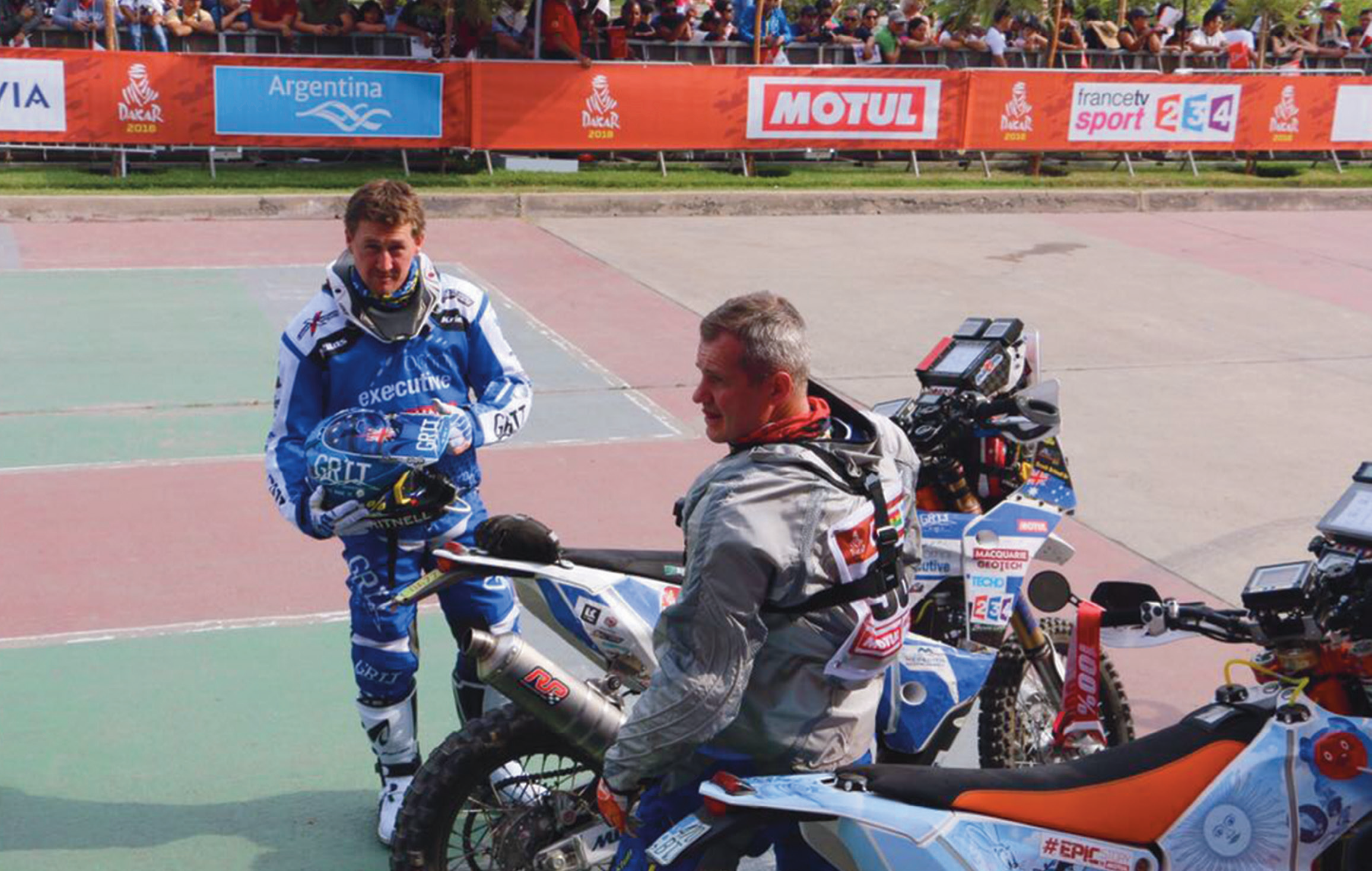

AdvR: What were the big lessons you learned from your first Dakar?
SB: Be fitter!
I won’t have altitude to worry about in Saudi Arabia compared to South America, but I’ll be fitter and more structured with my daily routine during the race.
Experience is a great thing. Having your box of tools and spare parts set out properly, and understanding priorities, is important: the bike is always the priority.
Fitness and self-preservation, and having a better daily routine, is the way to go, and self-preservation is somewhere I tend to fail. I let my energy levels go down because I’m focused on keeping the bike on track.
It’s such a long race, and it’s not something I appreciated until I had the experience of doing it the first time.
AdvR: Tell us more about the tours.
SB: I advertised on social media and got enough takers to put some bikes in a container to go do a three-week tour of Mongolia.
I ran a tour there two years ago. We took 12 guys over for two weeks and it’s a phenomenal part of the world. It’s very
special for riding. It’s kind of built for adventure riding.
The tours are really an occasional opportunity to take people somewhere unique that I want to ride myself, not so much as a commercial venture to make a living from. I’d never get sick of riding Mongolia, but I also have future plans elsewhere.
If only there were more hours in a day, days in a week and months in a year!



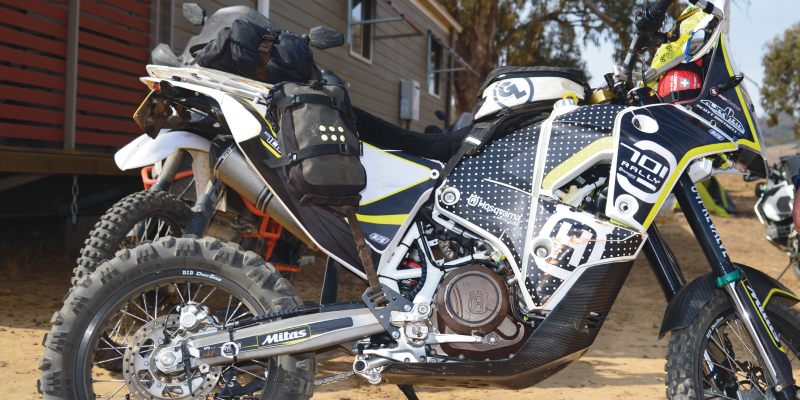







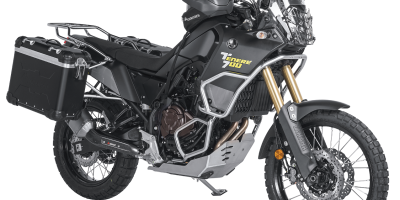
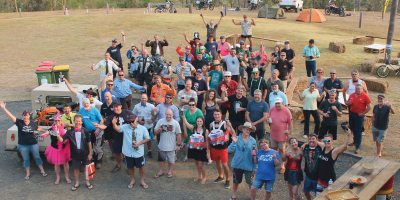




Comments